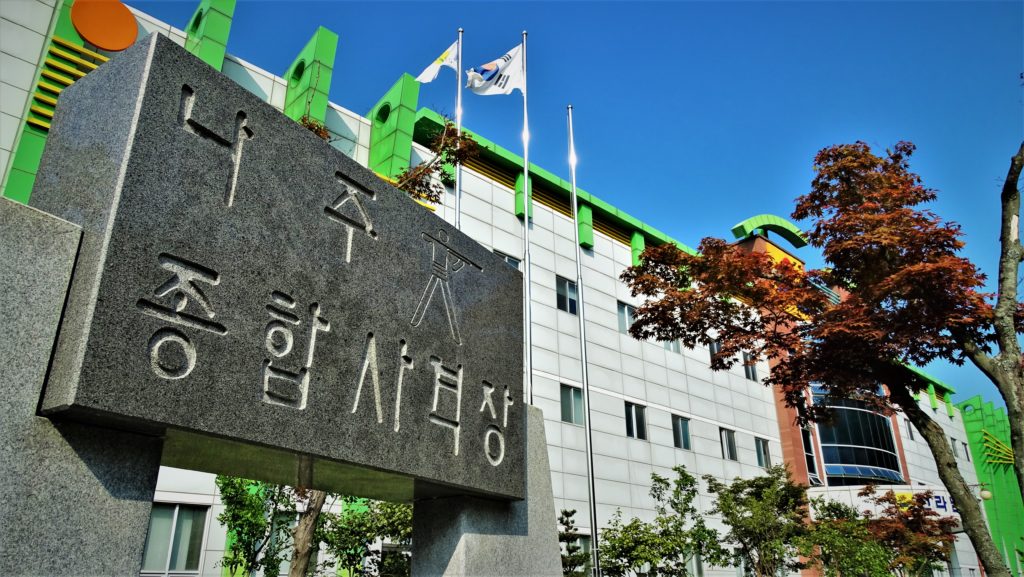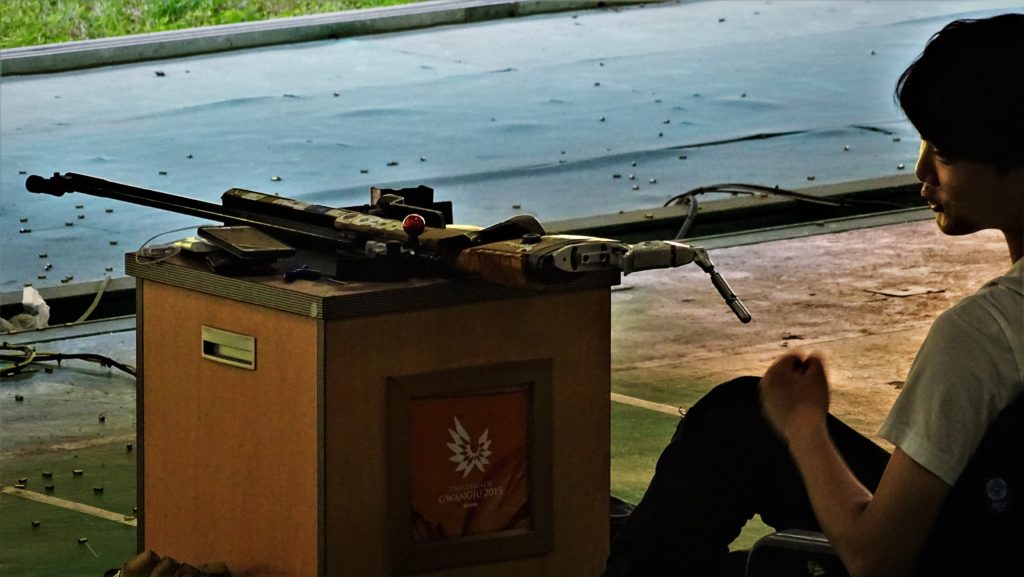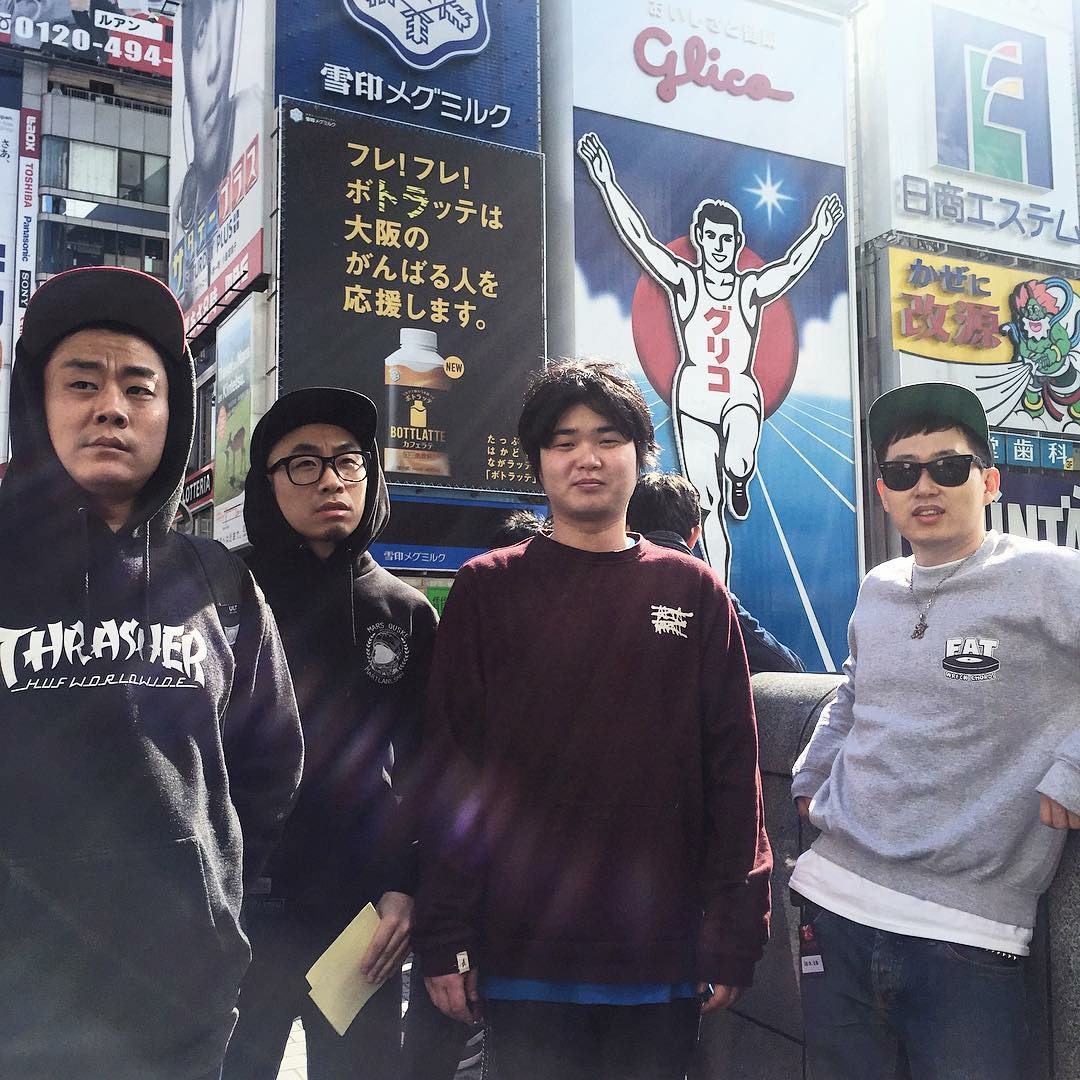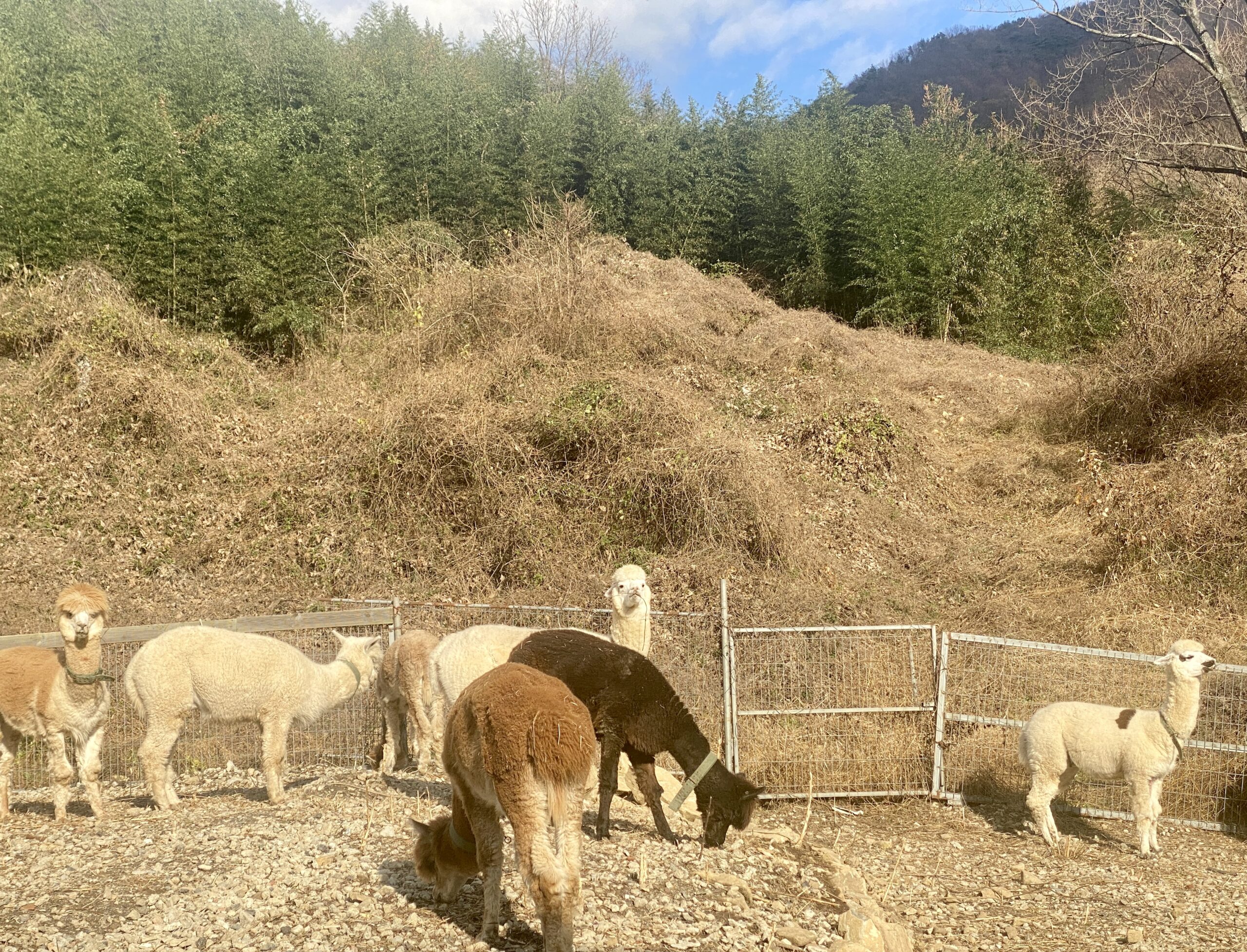Shooting It Up in Naju
Written and photographed by Isaiah Winters
It’s always good to step out of your comfort zone, especially when you find yourself worn thin by the daily grind. To relieve myself of workplace tedium (and put my high-heeled date on the spot), we recently went clay shooting in Naju. It was my second visit to this particular shooting range and umpteenth time shooting a firearm, so I knew what to expect; however, for her it was all nerves from the instant we disembarked and heard the first shots echo through the verdant hills. And yet, by the final shell she was already keen to try other firearms in the future. That’s how fast the excitement of shooting can grow on a first-timer.

What’s far less exciting is finding the official name of the shooting range we went to. The building itself says Jeollanam-do International Shooting Range (전라남도 국제 사격장), while the granite sign out front says Naju General Shooting Range (나주 종합 사격장). Then again, the instructions bulletin inside the office calls it Jeonnam General Shooting Range (전남 종합 사격장). The shooting range’s information guide, on the other hand, has no Korean name and simply calls it Jeollanam-do Shooting Range in English. Meanwhile, Daum Maps calls it Jeollanam-do General Shooting Range (전라남도 종합 사격장) for whatever reason, and the local road signs say Naju Generalization Shooting Range. For this article, I went with the simplest name and called it a day.

The Naju General Shooting Range is located in the hills just behind Naju City Hall. It’s quite a serene location that’s well insulated from the hustle and bustle of the nearby city. The facilities are quite new and well maintained, and the security guard in charge of the armory is very friendly. If you don’t speak Korean, you can just say “clay” or “American trap” and he’ll guide you to the right place (to the left of the main building, downstairs). There, a small office will have one or two instructors on the spot ready to help you sign in and learn the basics, including how to hold the shotgun, how to stand, and how to best line up the barrel with the clay pigeons for increased accuracy. Most of the instructions, which will be given in Korean, can be easily understood via body language and common sense. The others you’ll likely figure out in real time.
As for the shooting experience itself, it’ll work wonders on your stress levels. People who frequent batting cages and driving ranges often confirm that a few good hard swings can reduce stress, and shooting is no different. The tension before pulling the trigger, the intense kick from the stock, and the surprise hit-or-miss results can leave quite an exhilarating feeling in their wake. (Less exhilarating is the shoulder bruising you’ll likely notice the next day. Consider it a souvenir.) Also, there’s nothing quite as badass as the feeling you get when you pop open the smoky chambers and the used shells are effortlessly ejected for you. If you go clay shooting like we did, you’ll notice a basket of discarded shotgun shells behind you that you can try to eject your shells into, that way you get practice shooting in both directions.

Arguably the best part of the experience is coming up with your own command word that lets your instructor know when to release the clay pigeons. You could go with the ubiquitous Pull! that many say, but there’s no reason to be so boring. For example, yours truly went with shama lama ding dong. For less imaginative clay shooters in Korea, a simple eo (어) will suffice. By contrast, the worst part of the experience is probably how quickly your money goes. The minimum of 25 shotgun shells will cost you 22,000 won (or 880 won a pop), which doesn’t sound so expensive at face value, but when you consider how quickly you can shoot 25 rounds, the price begins to loom larger. This dawned on me after my first visit, which felt like a blur, so I was careful to slow things down the next time around. If you aren’t aware of this, then you might find yourself departing the shooting range only fifteen minutes after arriving, which can leave you wanting.
One way you can prolong the experience is by putting down the shotgun from time to time to relieve muscle tension. The shotgun is heavy and you have to hold it steady the whole time, which can cause you to cramp up after only a few shots. Therefore, there’s nothing wrong with putting it down so you can loosen up for a bit. In fact, your instructor may even encourage this. Also, if your Korean is up to snuff, feel free to ask your instructor about ways to improve your shooting. For example, I wasn’t sure how long I should wait before pulling the trigger: Should I shoot as soon as the clays leave the trap house or should I let them gain maximum altitude first? I asked my instructor and, of course, he said earlier was better because it was easier. Duh.

Anyway, if you decide to go, take your Alien Registration Card just in case. On my first visit, it was required, but not so the second time around. There are lots of rules listed (in Korean) in the office, including no drugs, phones, or high heels allowed while shooting, but we openly flaunted two of those, and they were cool about it. Lastly, I’m not sure about the work hours, as their website (jnshot.or.kr) is buggy and not very user-friendly. What I do know is that over the phone they said no reservations were required and that early afternoon was the best time to visit. With that, happy shooting and shama lama ding dong, dear readers!
The Author
Originally from Southern California, Isaiah Winters first came to Gwangju in 2010. He recently returned to South Korea after completing his MA in Eastern Europe and is currently the chief proofreader for the Gwangju News. He enjoys writing, political science, and urban exploring.





